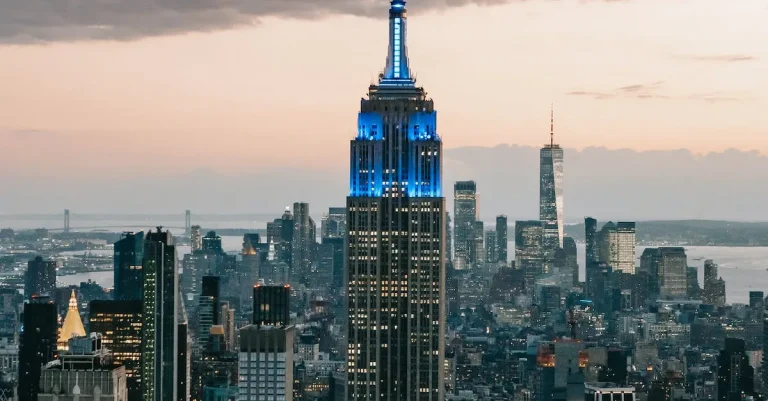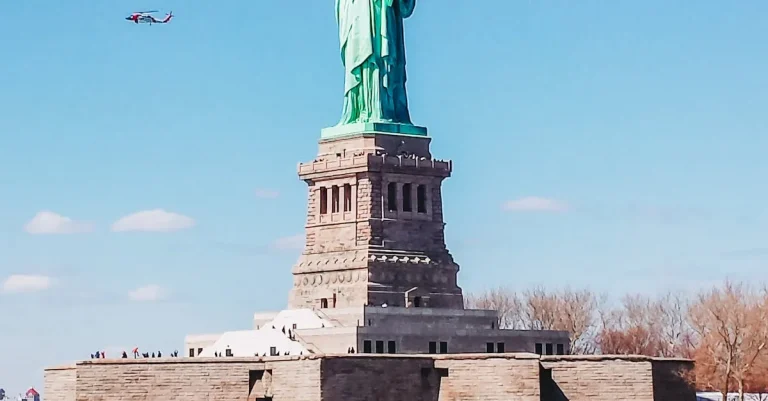California In The 1980S: A Look Back At A Pivotal Decade
The 1980s were a definitive period for the state of California, marked by major events, pop culture trends, and rapid changes. If you’re short on time, here’s a quick snapshot: The 1980s saw California emerge as an economic powerhouse in tech and trade, even as strains appeared with rising inequality and diversification.
In this comprehensive guide, we’ll explore what life and culture were like in California during the transformative 1980s. With a detailed examination of politics, entertainment, immigration, social movements and more, you’ll understand this pivotal decade that shaped modern California.
Politics and Government in 1980s California
The 1980s marked a significant era in California’s political landscape, as the state experienced several major shifts in power and policy. From the rise of Republican influence to tax revolts and environmental regulations, the politics and government of 1980s California were dynamic and transformative.
Rise of Republican Power
During the 1980s, California saw a notable surge in Republican power. Led by influential figures like Governor George Deukmejian, the Republican Party gained traction and held a firm grip on state politics.
The party’s conservative ideologies appealed to many Californians, particularly on issues such as crime, taxes, and business regulation. This shift in political power had a lasting impact on the state’s policies and direction.
Tax Revolts and Propositions
The 1980s also witnessed a wave of tax revolts and the passage of significant propositions that shaped California’s fiscal landscape. One of the most prominent examples was Proposition 13, which was passed in 1978 but continued to have a profound impact throughout the 1980s.
Proposition 13 imposed strict limits on property taxes, providing relief for homeowners but also leading to a decrease in revenue for local governments. This measure set the stage for future tax-related propositions, highlighting the ongoing tension between fiscal responsibility and the provision of public services.
In addition to Proposition 13, other tax-related propositions, such as Proposition 98 and Proposition 99, were introduced in the 1980s. Proposition 98 guaranteed a minimum level of funding for public education, while Proposition 99 imposed a cigarette tax to fund healthcare and anti-smoking programs.
These propositions reflected the Californian public’s desire to address key issues through direct democracy and marked a significant shift in the state’s approach to governance.
Environmental Regulations
The 1980s also saw California leading the nation in environmental regulations. Governor Deukmejian, along with other state leaders, recognized the importance of protecting the state’s natural resources and promoting sustainability.
This led to the implementation of various environmental policies and regulations, including the landmark California Environmental Quality Act (CEQA). CEQA required environmental impact assessments for major development projects, ensuring that environmental considerations were taken into account in the decision-making process.
Furthermore, California played a crucial role in advocating for stronger federal environmental regulations during the 1980s. The state’s commitment to environmental protection influenced national policies and set a precedent for other states to follow.
California’s proactive approach to environmental issues in the 1980s laid the foundation for future environmental movements and legislation.
Economic Growth and Inequality
The 1980s were a pivotal decade for California, marked by significant economic growth and increasing inequality. The state experienced a boom in various industries, including technology, trade, and transportation.
However, this growth was not without its challenges, as poverty and homelessness rates also surged during this time.
Tech Boom
One of the key factors contributing to California’s economic growth in the 1980s was the rise of the technology industry. Companies like Apple, Microsoft, and Intel emerged as major players, revolutionizing the way we live and work.
The development of personal computers and advancements in software engineering fueled the tech boom, attracting skilled professionals and generating high-paying jobs.
The technology sector not only transformed California’s economy but also had a ripple effect on other industries. For example, the growth of Silicon Valley led to increased demand for real estate, creating a housing market boom.
However, this also contributed to rising housing costs and the displacement of lower-income residents, exacerbating inequality in the state.
Ports and Trade
California’s ports played a crucial role in driving economic growth during the 1980s. The Port of Los Angeles and the Port of Long Beach became major hubs for international trade, facilitating the import and export of goods from around the world.
This booming trade industry created numerous job opportunities and stimulated economic development throughout the state.
The trade sector not only benefited California’s economy but also contributed to its growing inequality. While the ports brought wealth and prosperity to some communities, others experienced the negative consequences of trade imbalances.
The influx of cheap imported goods led to the decline of certain manufacturing industries, resulting in job losses and economic hardships for many working-class individuals.
Poverty and Homelessness
Despite the economic growth experienced in the 1980s, California also witnessed a sharp increase in poverty and homelessness. The rising cost of living, coupled with the widening wealth gap, left many Californians struggling to make ends meet.
In urban areas like Los Angeles and San Francisco, visible signs of poverty and homelessness became more prevalent.
The high cost of housing was a significant contributing factor to the increase in homelessness. As property values soared, affordable housing options became scarce, forcing many individuals and families onto the streets.
The lack of affordable housing and adequate social support systems highlighted the need for policy interventions to address the issue of poverty and homelessness in the state.
Entertainment and Pop Culture
Music Scene
The 1980s was a decade of vibrant music and cultural revolution in California. From the emergence of new wave and punk rock to the rise of pop icons, the music scene in California was booming. Bands like the Eagles, Fleetwood Mac, and Metallica dominated the charts, while artists such as Michael Jackson and Madonna revolutionized pop music.
The iconic venues like The Troubadour and The Whisky a Go Go in Los Angeles became hotspots for aspiring musicians to showcase their talent. The 1980s in California was truly a golden era for music.
Film Industry
California’s film industry, centered in Hollywood, experienced significant growth and success in the 1980s. The decade saw the release of numerous iconic and influential movies that have become cultural touchstones. Blockbusters like “E.T.
the Extra-Terrestrial,” “Back to the Future,” and “Raiders of the Lost Ark” captivated audiences worldwide. The California film industry also witnessed the rise of notable directors like Steven Spielberg and George Lucas, who pushed the boundaries of storytelling and visual effects.
The 1980s marked a pivotal period in the history of California’s film industry.
Theme Parks and Tourism
California’s theme parks and tourism industry flourished in the 1980s, attracting millions of visitors from around the world. Disneyland, located in Anaheim, continued to be a major tourist attraction and expanded with the opening of new rides and attractions.
Meanwhile, Universal Studios Hollywood gained popularity with its studio tours and thrilling experiences. Additionally, the introduction of water parks like Raging Waters and Knott’s Soak City brought refreshing entertainment during the hot California summers.
The 1980s saw a surge in tourism, with visitors flocking to California to experience the magic of its theme parks.
Demographics and Social Change
Immigration Patterns
One of the most significant aspects of California in the 1980s was the state’s immigration patterns. During this decade, California experienced a surge in immigration, particularly from Latin American countries such as Mexico, El Salvador, and Guatemala.
This influx of immigrants played a major role in shaping the state’s demographics and cultural landscape. According to the Pew Research Center, California was home to nearly 3 million undocumented immigrants in 1990, accounting for about 6% of the state’s population at the time.
The impact of immigration was felt in various areas, including the economy, politics, and social dynamics. Immigrants brought their traditions, cuisine, and customs, enriching the cultural fabric of California.
They also contributed significantly to the state’s workforce, particularly in industries such as agriculture, construction, and hospitality. However, the increase in immigration also sparked debates and discussions around issues like border control, assimilation, and the rights of undocumented immigrants.
To learn more about immigration patterns in California during the 1980s, you can visit the Pew Research Center’s Hispanic Trends Project.
Racial Diversity
The 1980s marked a period of significant racial diversity in California. The state has long been known for its diverse population, but during this decade, it became even more pronounced. According to the US Census Bureau, California was the most ethnically diverse state in the country by 1990, with no single racial or ethnic group constituting a majority.
This diversity was a result of various factors, including immigration, internal migration, and the historical presence of different racial and ethnic communities. The 1980s saw an increase in the Asian American population, particularly from countries like China, Vietnam, and the Philippines.
African Americans, Hispanics, and Native Americans also continued to contribute to California’s racial diversity.
The presence of multiple racial and ethnic groups contributed to a vibrant multicultural environment in California. It brought together different languages, traditions, and perspectives, fostering a sense of tolerance and understanding among residents.
It also led to the emergence of diverse cultural events, festivals, and celebrations that showcased the rich tapestry of California’s communities.
LGBTQ Activism
The 1980s were a crucial period for LGBTQ activism in California. During this decade, the LGBTQ community faced significant challenges, including the emergence of the HIV/AIDS epidemic. However, it was also a time of resilience and progress as activists fought for their rights and visibility.
California became a hub for LGBTQ activism, with cities like San Francisco and West Hollywood at the forefront of the movement. The LGBTQ community organized protests, marches, and advocacy groups to demand equal rights and an end to discrimination.
Notable events included the historic March on Washington for Lesbian and Gay Rights in 1987, where thousands of Californians joined the nationwide demonstration.
Additionally, the 1980s saw the rise of influential LGBTQ organizations, such as the AIDS Foundation of Los Angeles (now AIDS Project Los Angeles) and the San Francisco AIDS Foundation, which provided vital support and resources to those affected by HIV/AIDS.
Despite the challenges faced, LGBTQ activism in California during the 1980s laid the groundwork for future advancements in LGBTQ rights. It set the stage for important legislative victories, such as the passage of the California AIDS Ride, the first state law banning discrimination based on sexual orientation, and the creation of LGBTQ-inclusive curricula in schools.
To explore more about LGBTQ activism in California during the 1980s, you can visit the website of the LGBT Center of Los Angeles.
Conclusion
The 1980s were a transformative period for California on economic, political, cultural and social fronts. With this guide, you now understand the major events, figures, movements and pop culture that defined the state in that pivotal decade.
From tech booms to societal change, California assumed the shape of its contemporary identity during the monumental 1980s.








